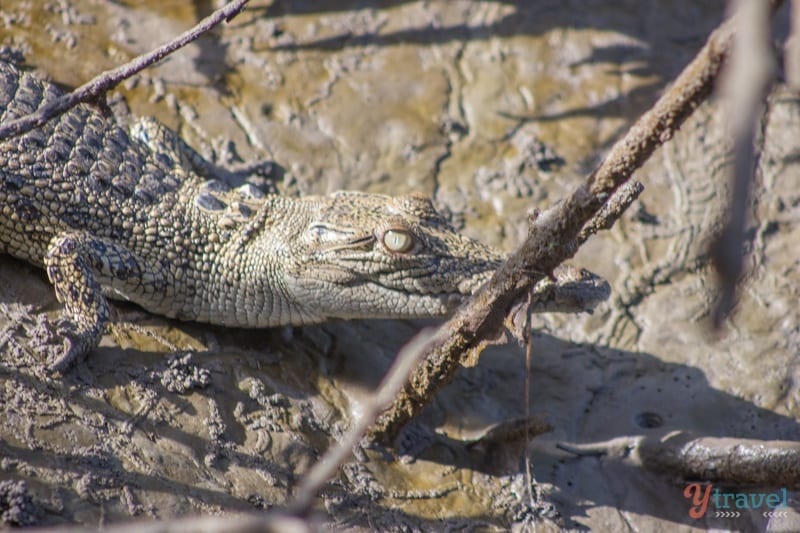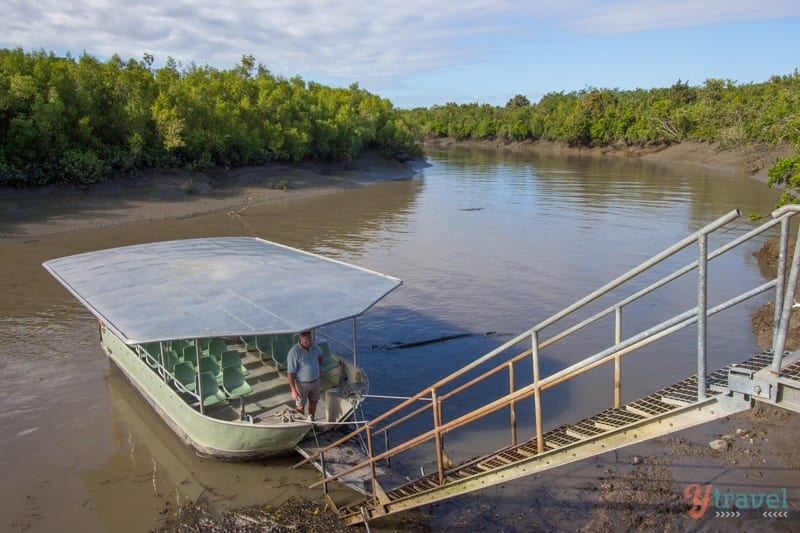This post may contain affiliate links. We may receive a small commission, at no cost to you, if you make a purchase. Read Disclosure.
The Whitsunday Islands are most synonymous for its pure silica sand so white and powdery it’s like walking through snow, or swimming face to face with bat fish out on the Great Barrier Reef, but there’s a side to the Whitsundays that might surprise you.
The last thing you think of when you think of the Whitsundays are mangroves and silty water so dark and murky you’ll never have a chance of spotting the 4 metre croc holding its breath on the bottom of the river bed, patiently waiting.
If you want to have a memorable experience that shows the other side to the Great Barrier Reef, then consider a Croc Safari of the wetlands of the Whitsundays.
This is a chance to see crocs up close in their freshwater wetland habitat, and since it connects to the ocean, you can see salties as well as freshies in the estuaries.
For wildlife lovers, this is the experience for you…
The Other Side of the Great Barrier Reef: The Mangrove Forest

The mangrove ecosystem is essential for the health of the reef. They trap sediments and absorb extra nutrients, and their complex root systems filter the water before it moves out into the ocean.
The roots slow the movement of tides and cause the sediment to fall to the bottom instead of depositing on the coral as the water moves past it.
The reef in turn buffers the heavy seas, which allow the mangrove forests to grow.
What a loving relationship they have!
Mangroves have never been high on the must-see list. At one stage they were so underrated in Australia they were ripped up and their swampy homes were turned into housing estates and cemeteries, and their natural inhabitants pushed out.
The damage we do when we don’t take the time to understand and appreciate the value every living thing holds…
Now we realise the importance of this unique tropical environment.
It’s like the small flowering plant our croc tour guide, Steve, told us about on the Whitsundays Crocodile Safari on the wetlands out the back of coastal Airlie Beach on the calm waters of Proserpine River.
In South America, there is a small rose coloured flower that are seen to be weeds, but this small little plant actually saves the lives of many in Southeast Asia who suffer the fate of a cobra bite.
Or the sandpaper fig, a flowering tree that many find to be pests growing in their back yards, yet…
Click Here to Read the Full Original Article at y Travel Blog…
